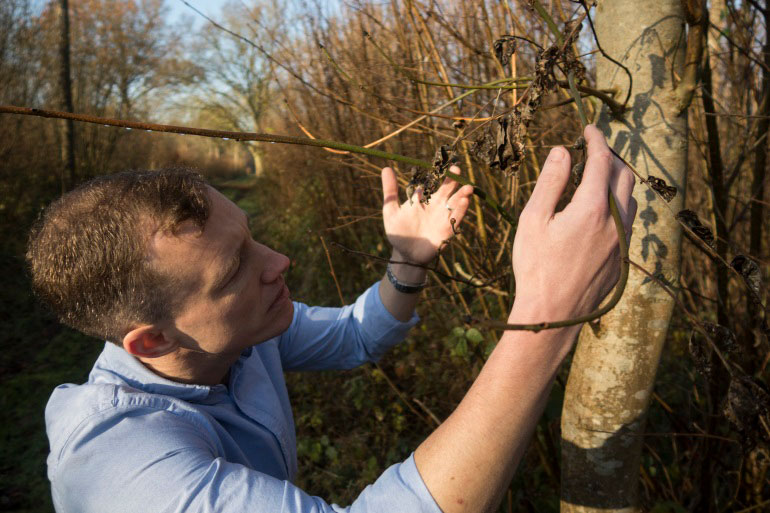Ash Dieback - the genome, invasion and evolution of the pathogen
What does the genome of the ash dieback pathogen tell us about successful invaders?
Led by: Neil Hall and Mark McMullan
Funders:
UKRI Biotechnology and Biological Sciences Research Council (BBSRC)
Hymenoscyphus fraxineus is a fungus that infects the leaves, stems and branches of the ash tree (Fraxinus excelsior). This fungal infection of ash trees is known as ash dieback and is visible first as blackened dead leaves and dark lesions at the base of dead side shoots. The disease will progress over subsequent years leading to dieback of branches in the crown of the tree and often death.
There are around 80 million mature ash trees in the UK, making it the UK’s third most common tree species. Ash makes up 5.5% of the nation’s total woodland cover (that’s 13.3% of broadleaved woodland) and there are also an estimated 11–12 million “non-woodland” ash.
Work by Richard Bugg and others (Kew Gardens) estimate that 60-100% of these trees will succumb to the disease. Moreover, we will hit a period of peak mortality in the coming years.
Our work on the fungal invasion of Europe suggests that just two individuals were introduced to Europe (from East Asia) and they have gone on to devastate ash populations.
In preliminary analyses of native diversity from a single Japanese wood we showed that genetic diversity was eight times higher there than present across Europe. Genetic diversity is generally assumed to be a proxy for how adaptable a species is and so it is concerning that diversity is so high in a single wood. Given the devastation of the progeny of just two individuals we now want to understand the invasion process itself, could more individuals invade and, if so, what would be the impact of that introduction?

It is important that we understand the processes that lead to novel fungal invasions in greater detail because they may become more frequent as our climate changes and global trade increases. Considering the devastation already wrought on our native ash trees by such an invasion, it is also vital that we better comprehend the genetics underpinning juvenile survival of ash dieback - especially when acknowledging the potential for future invasions as ash dieback continues to evolve.
It is also a fascinating opportunity to highlight what makes a fungus pathogenic, by looking into the differences between Europe and Japan, where the ash dieback fungus does not cause disease.